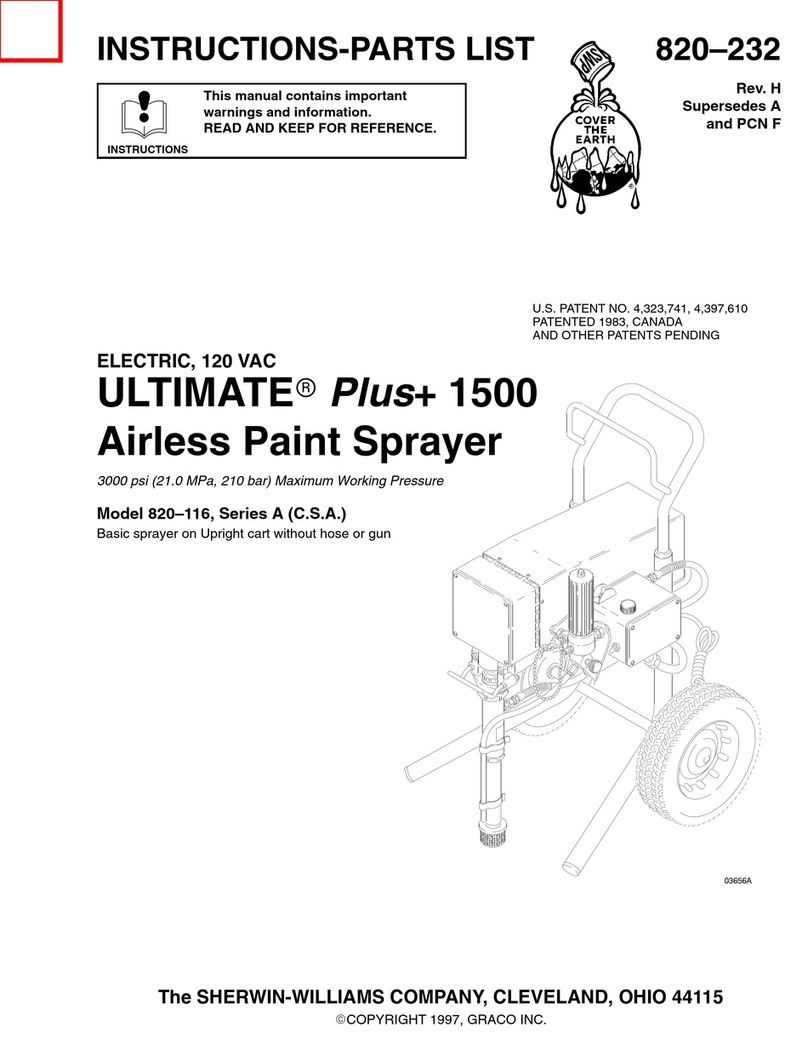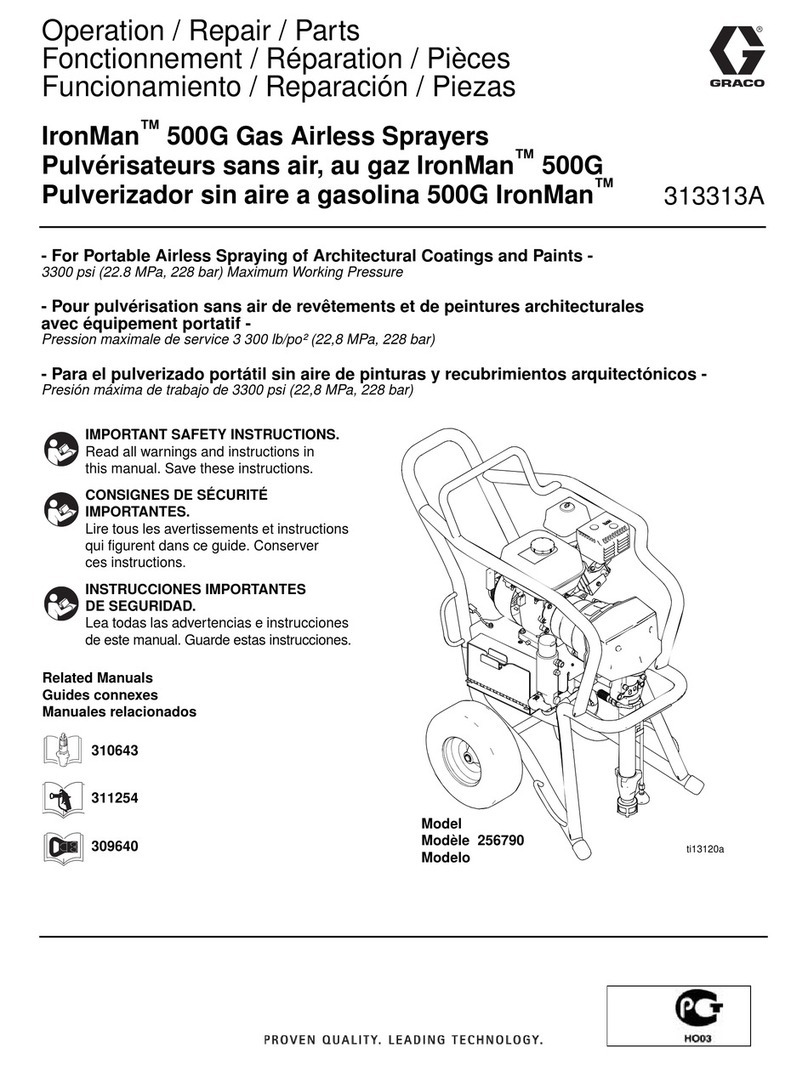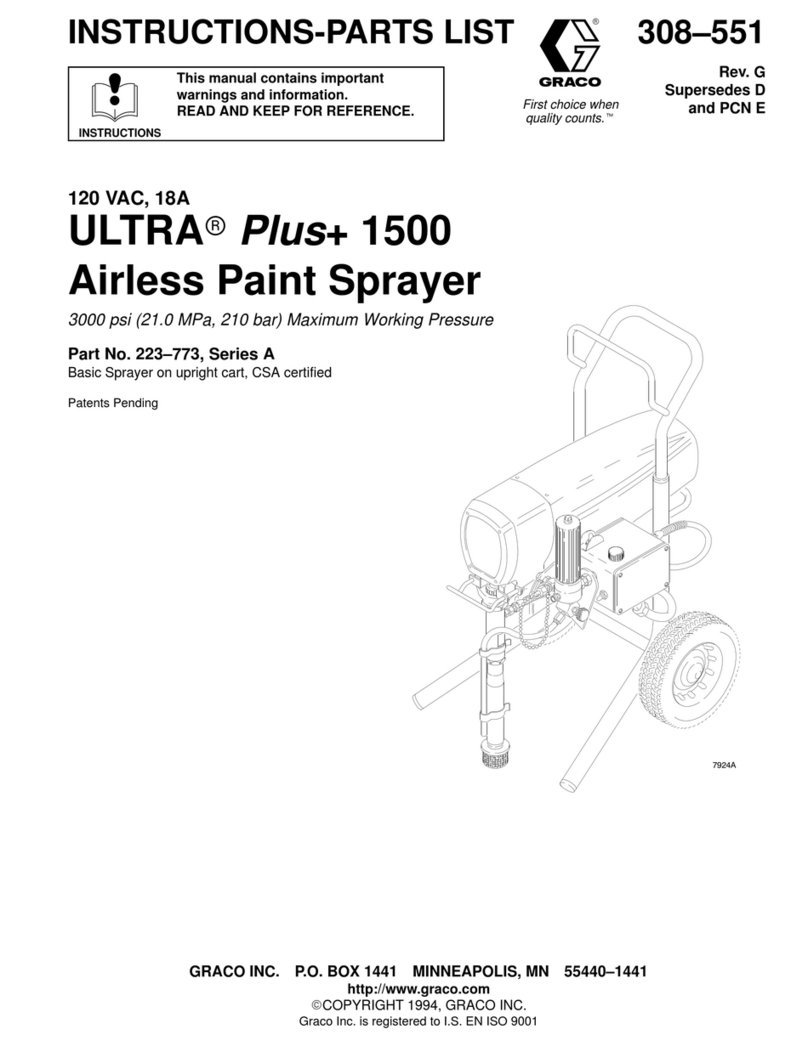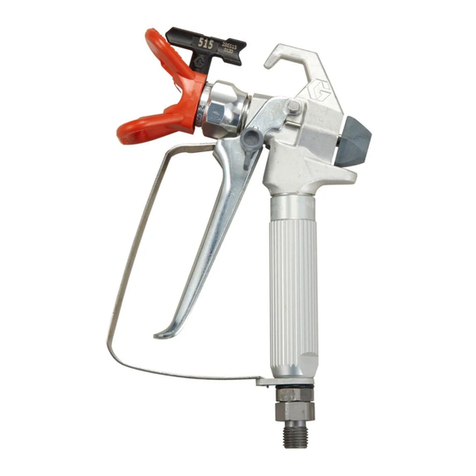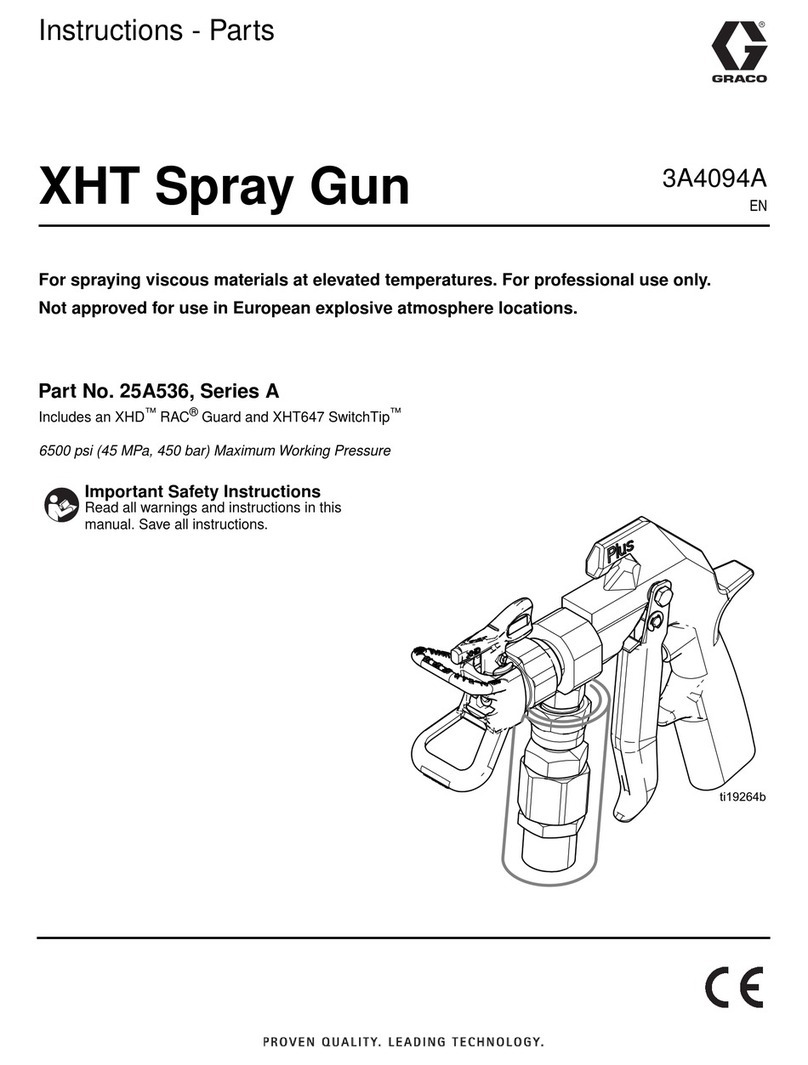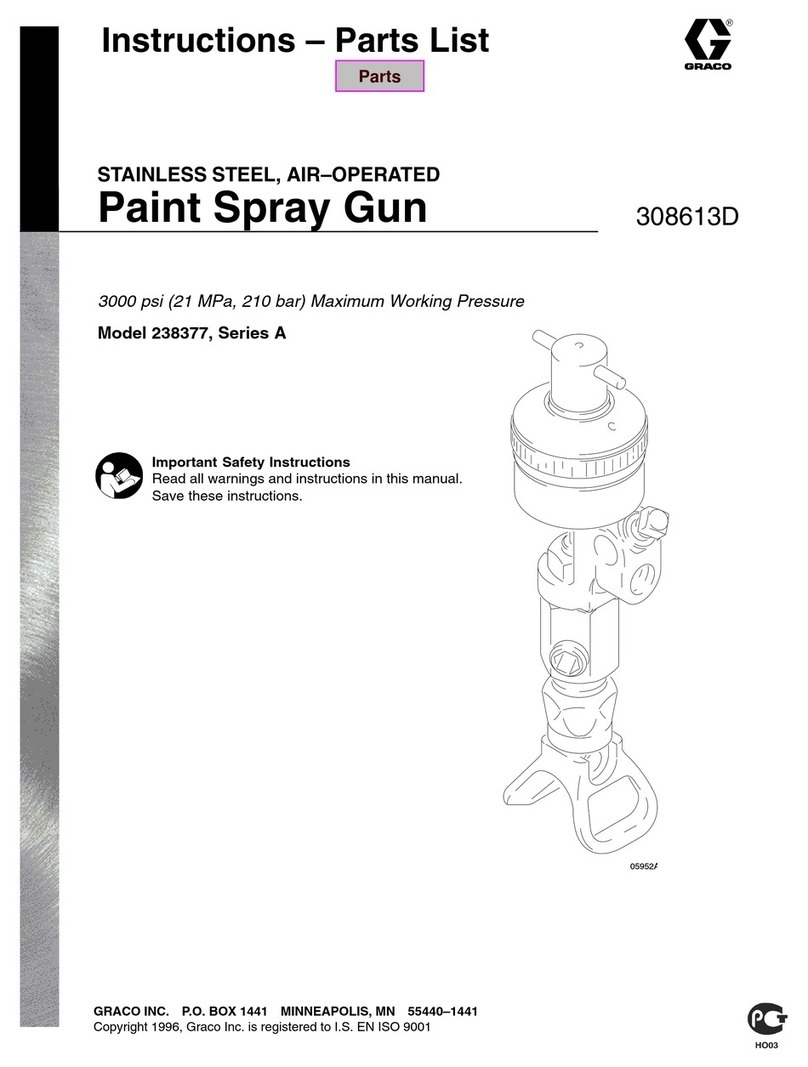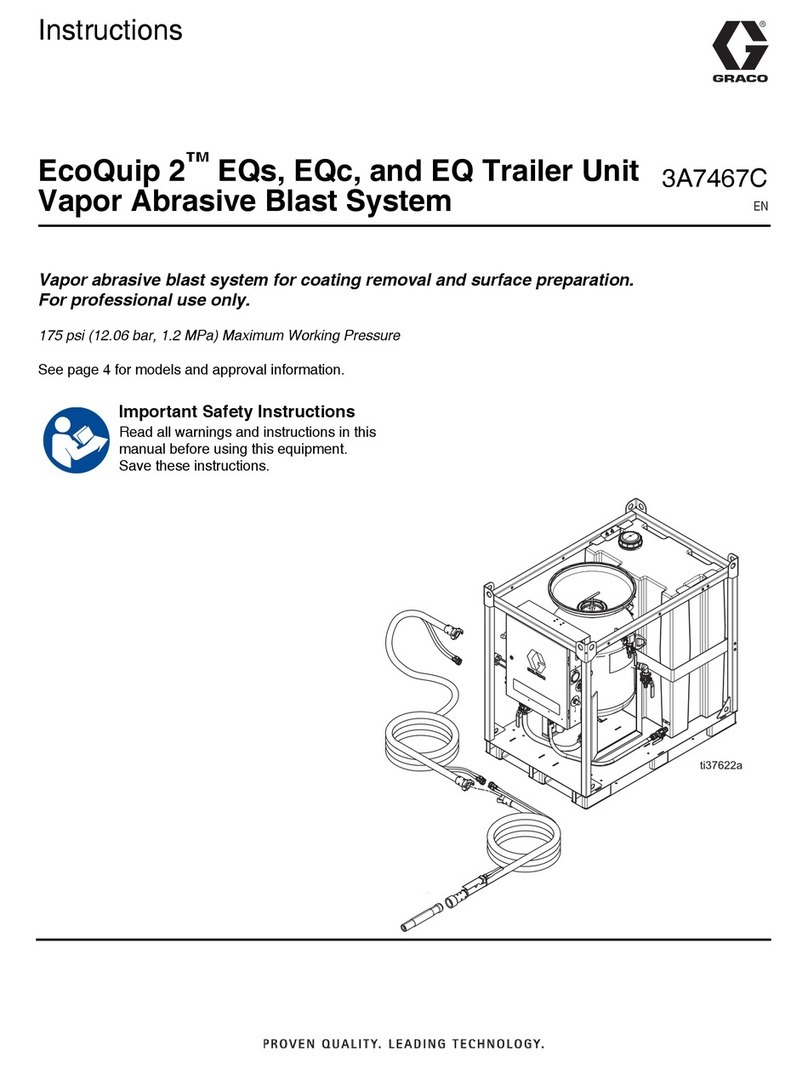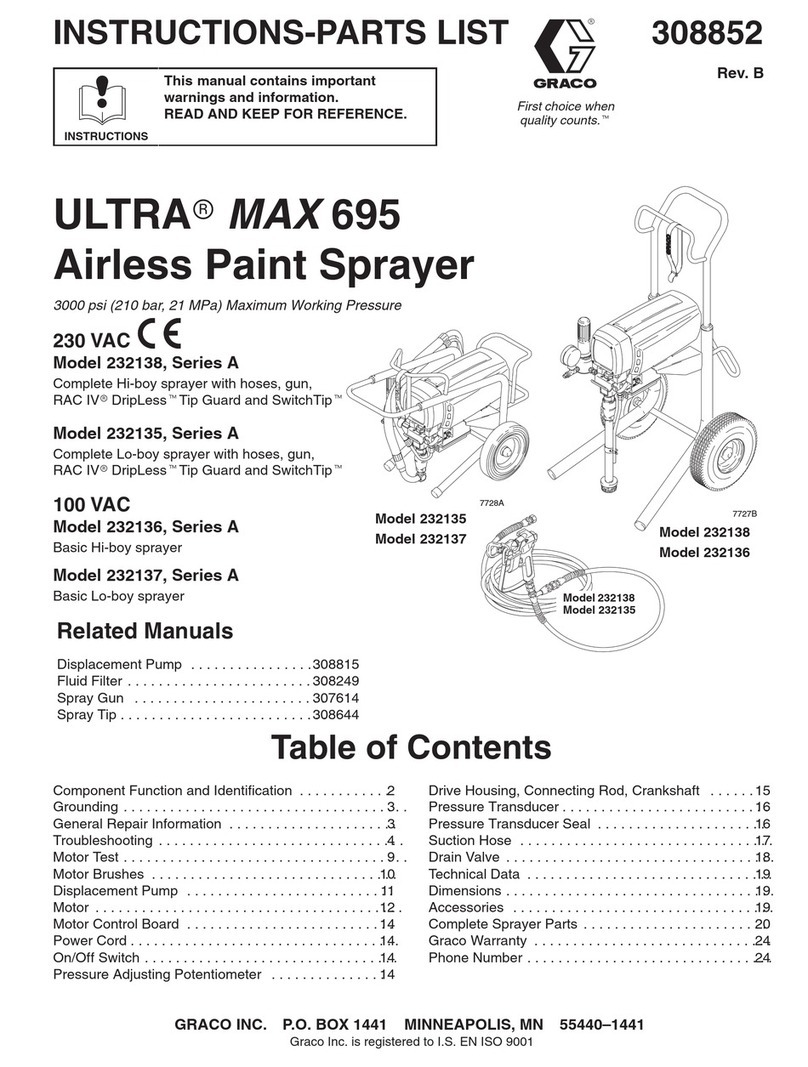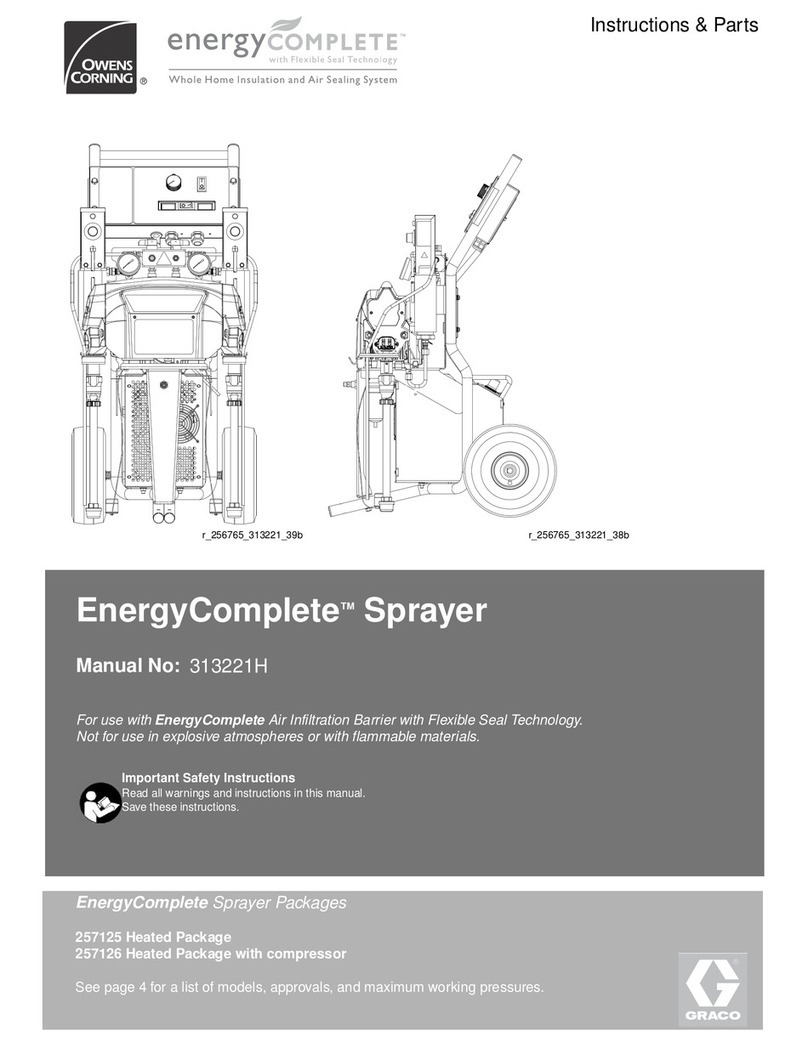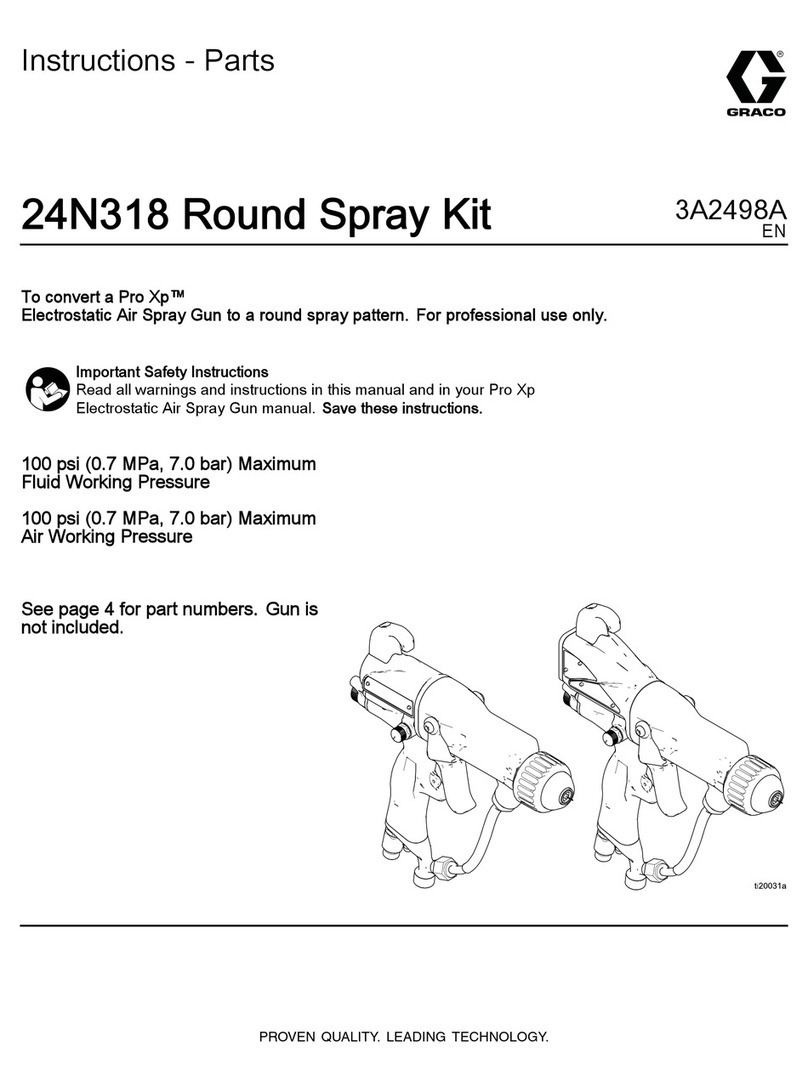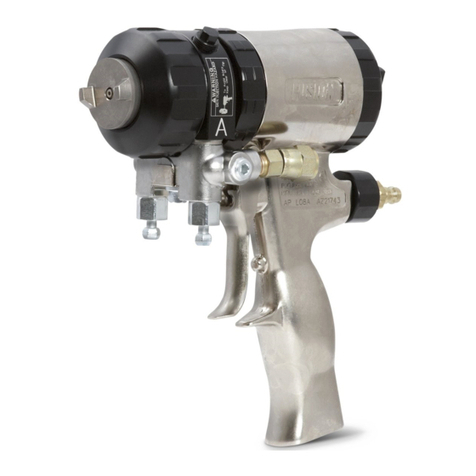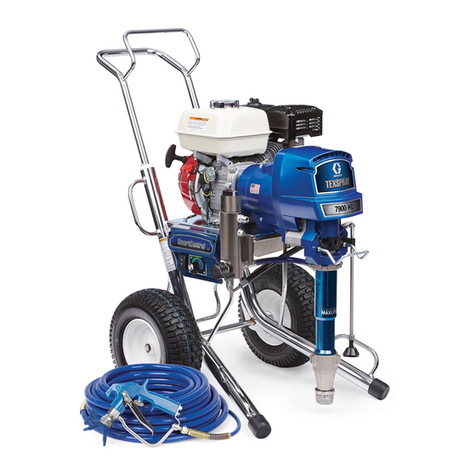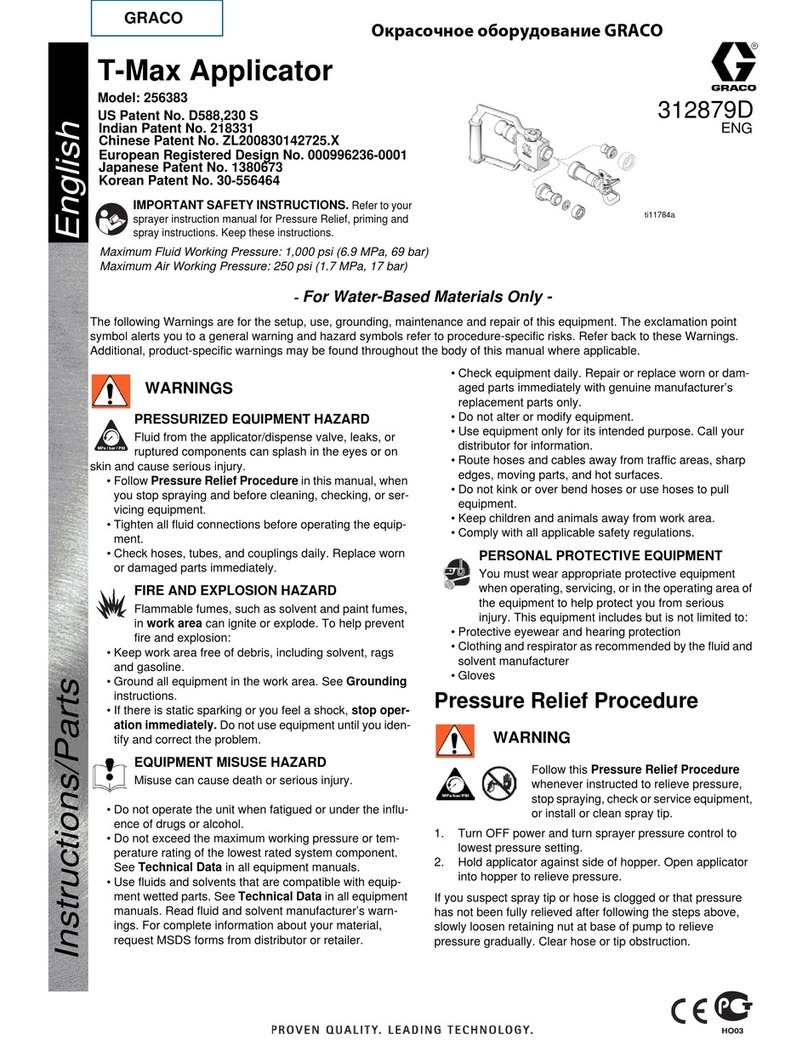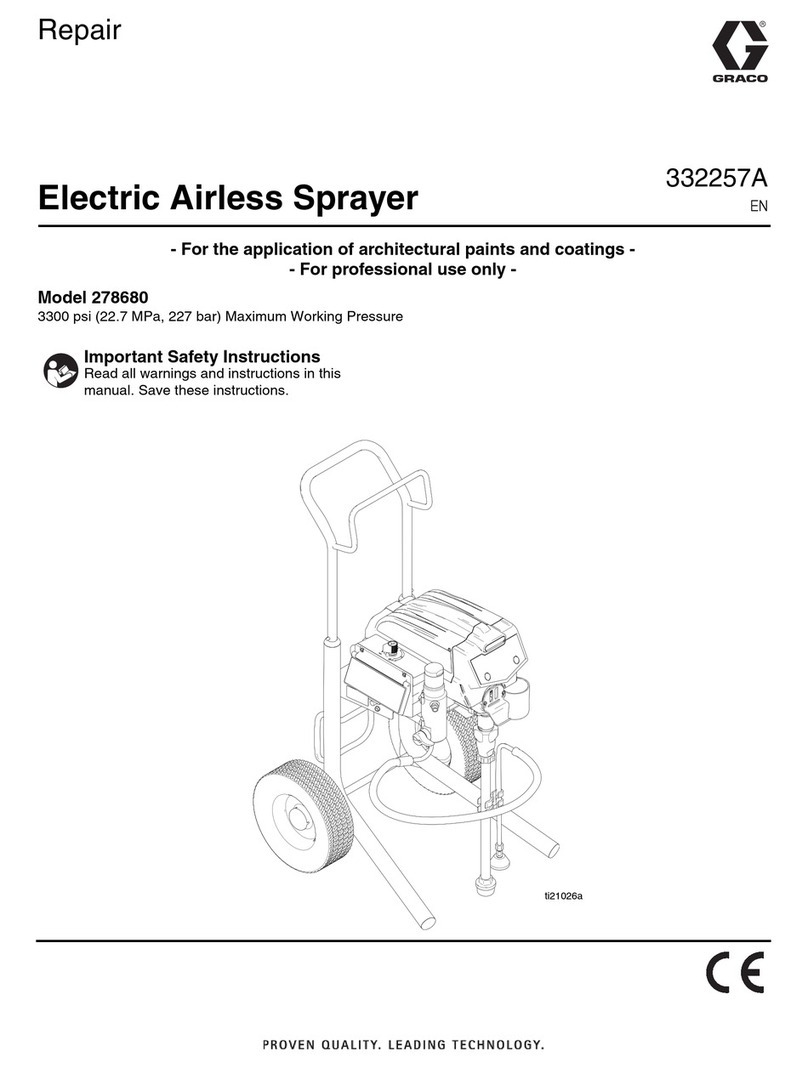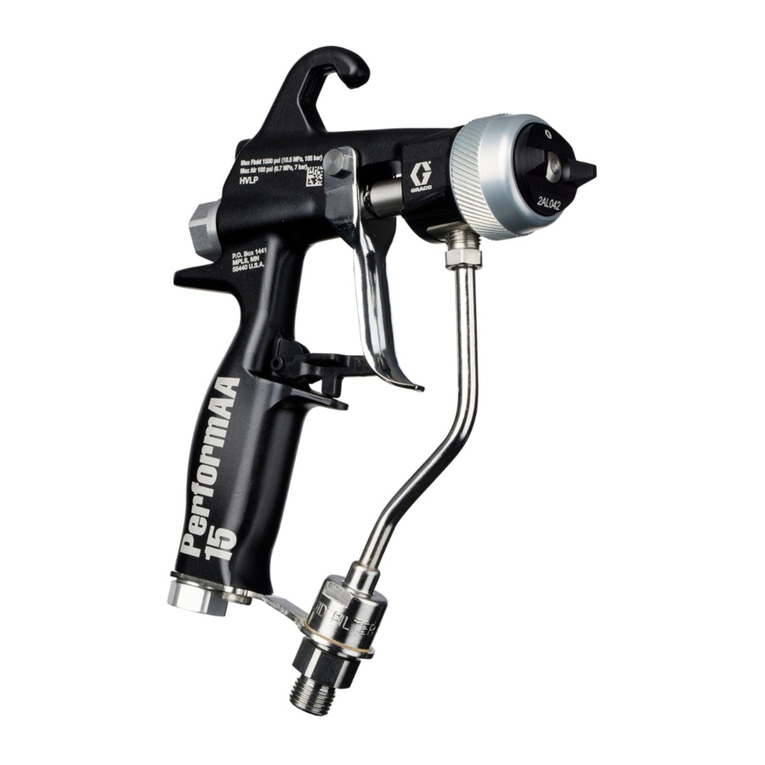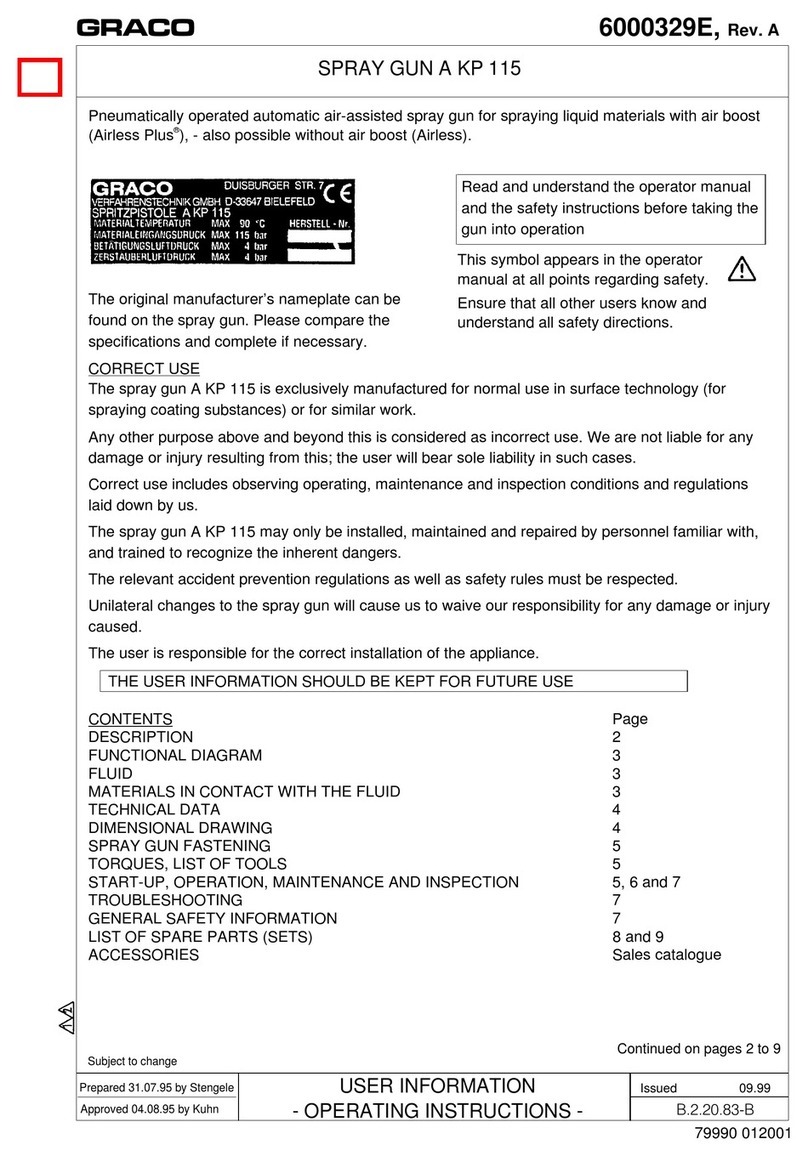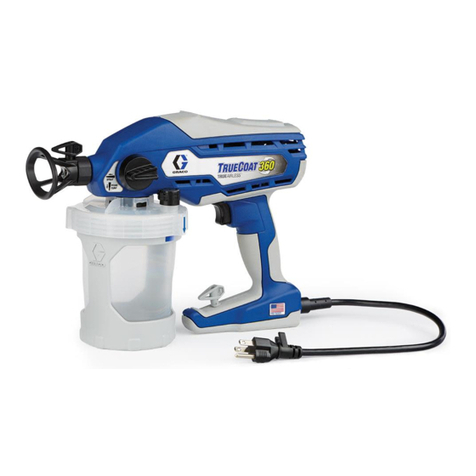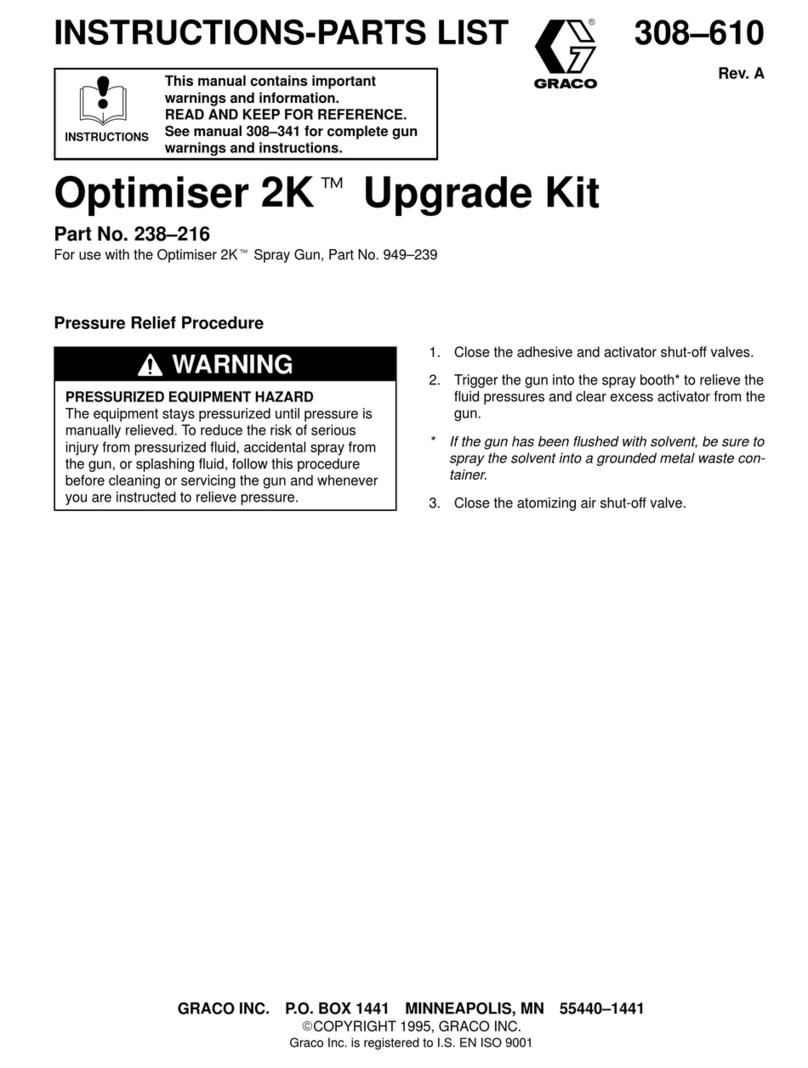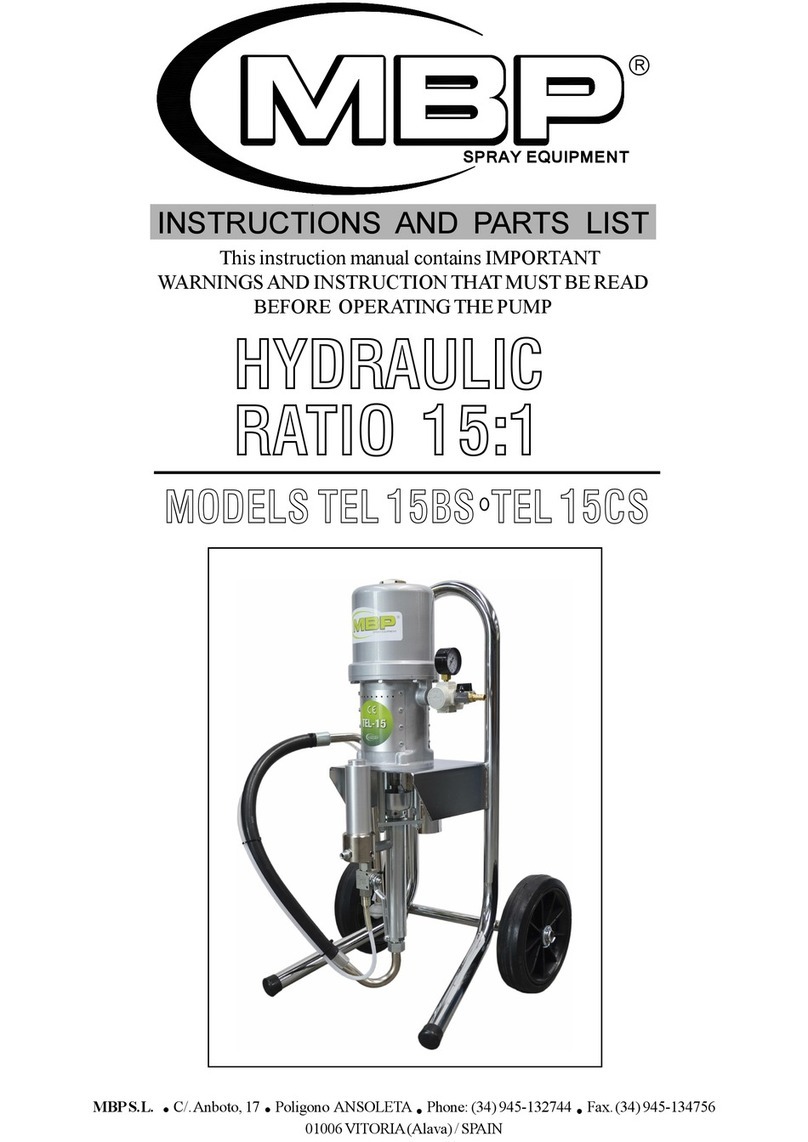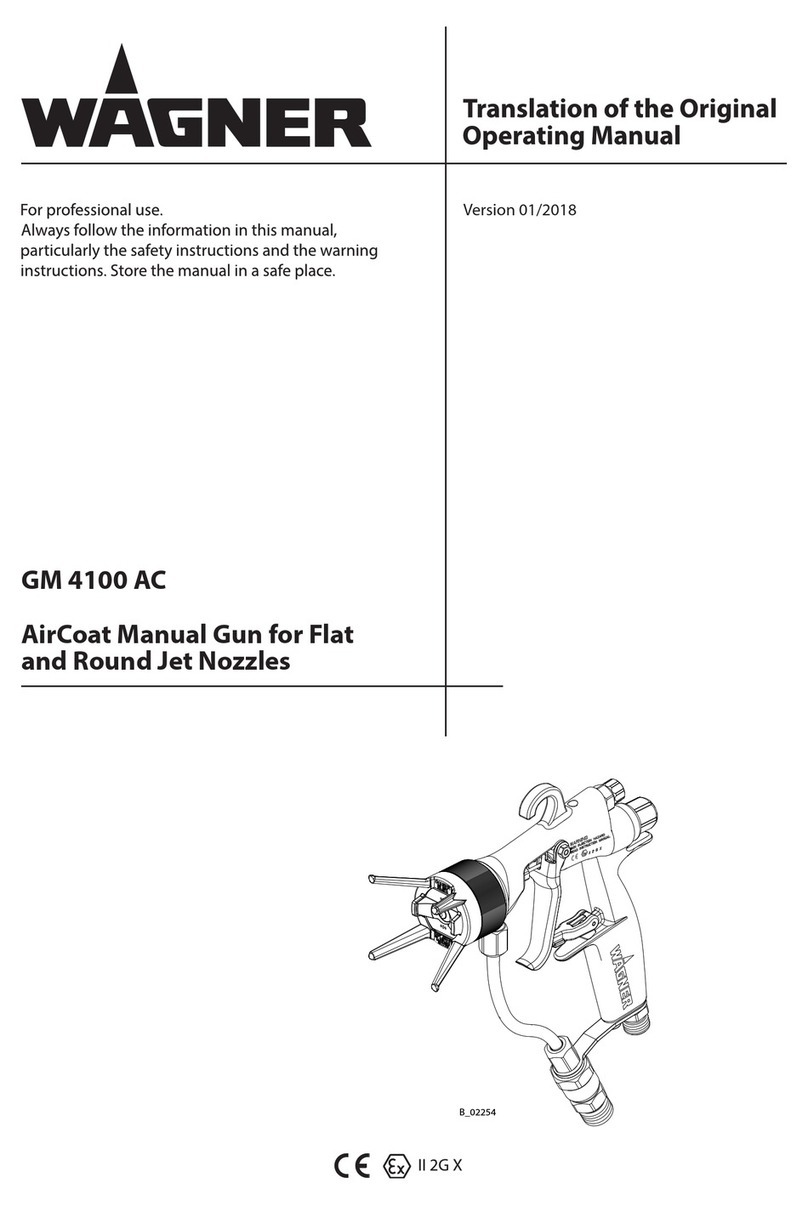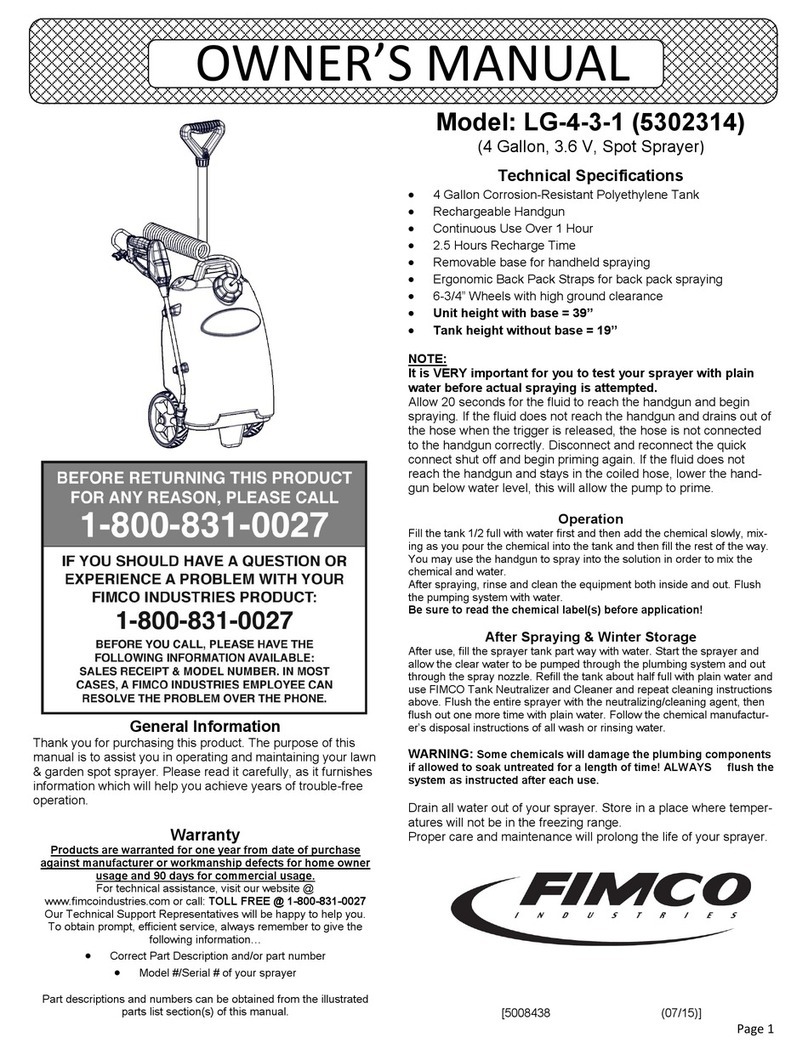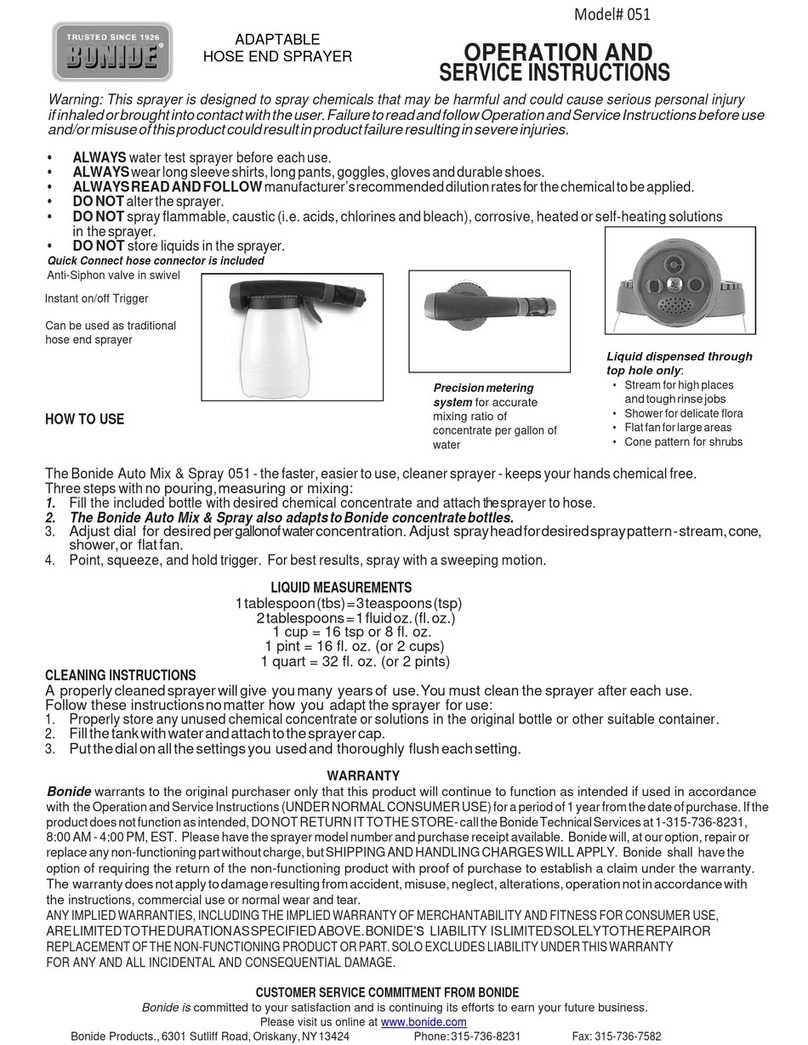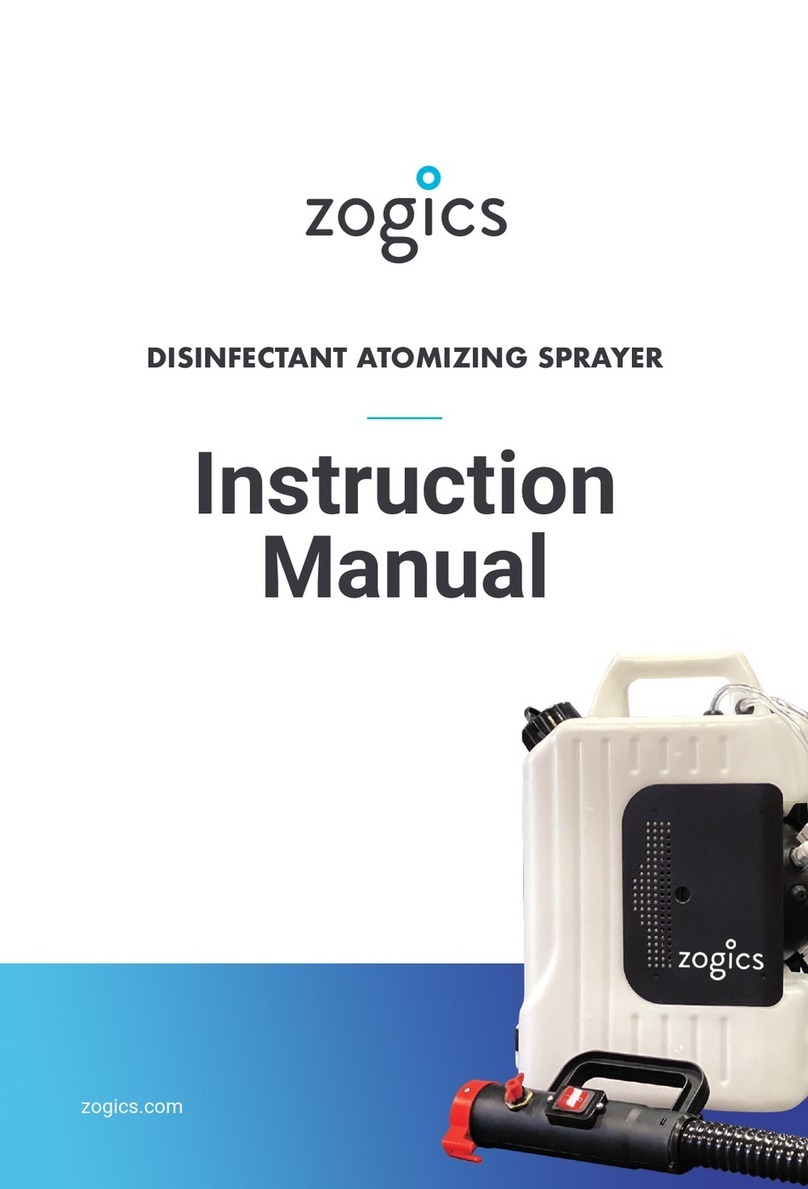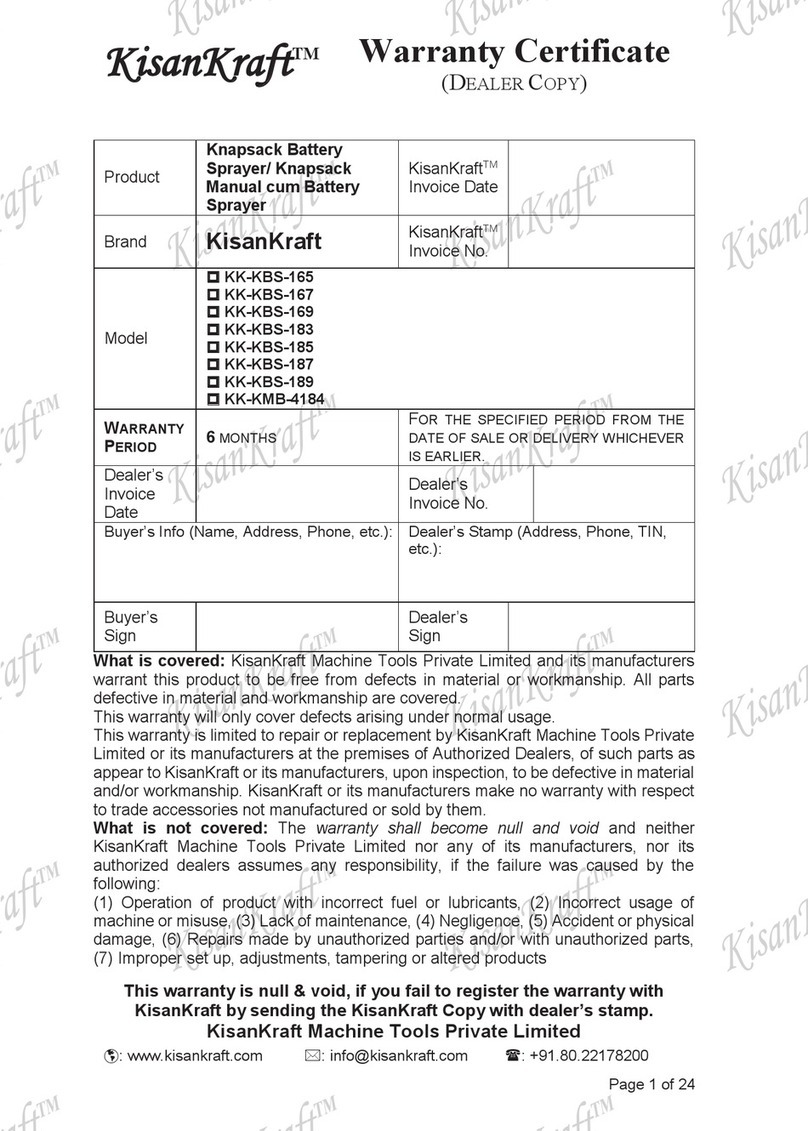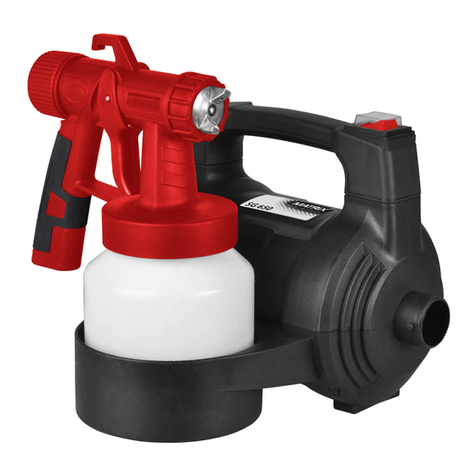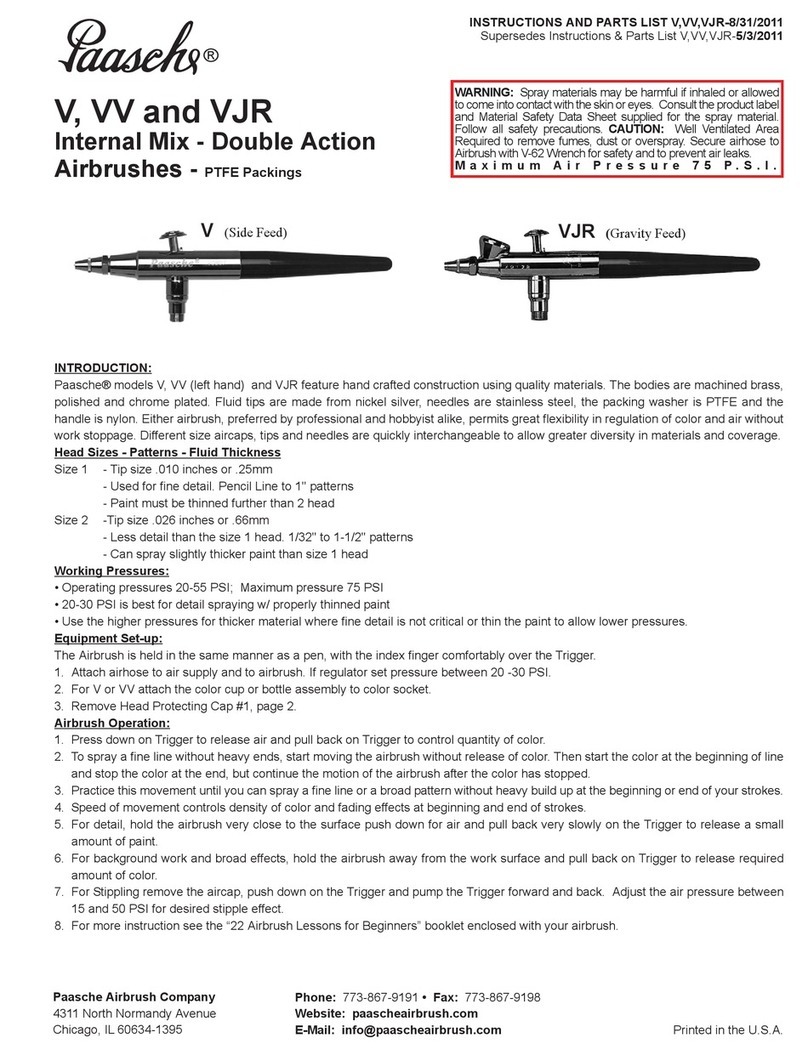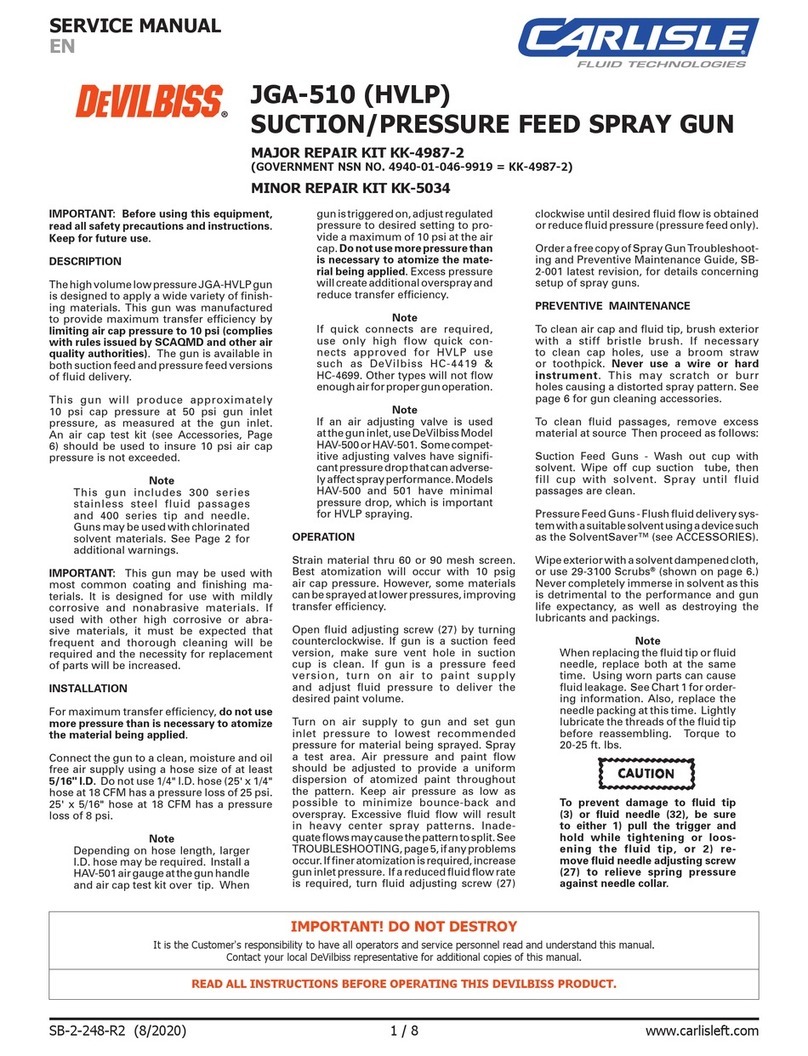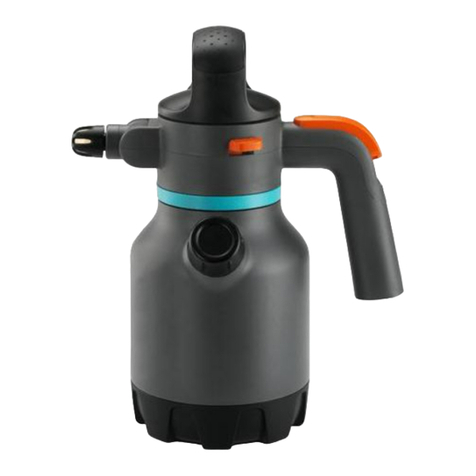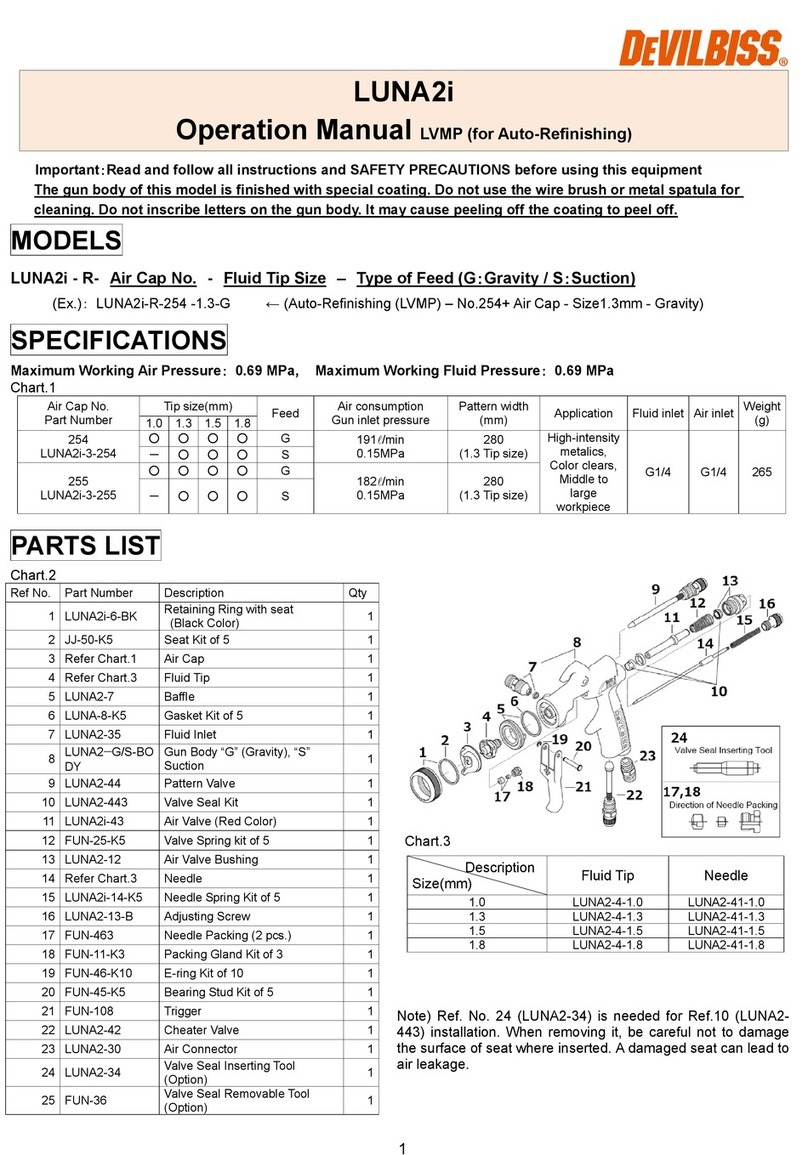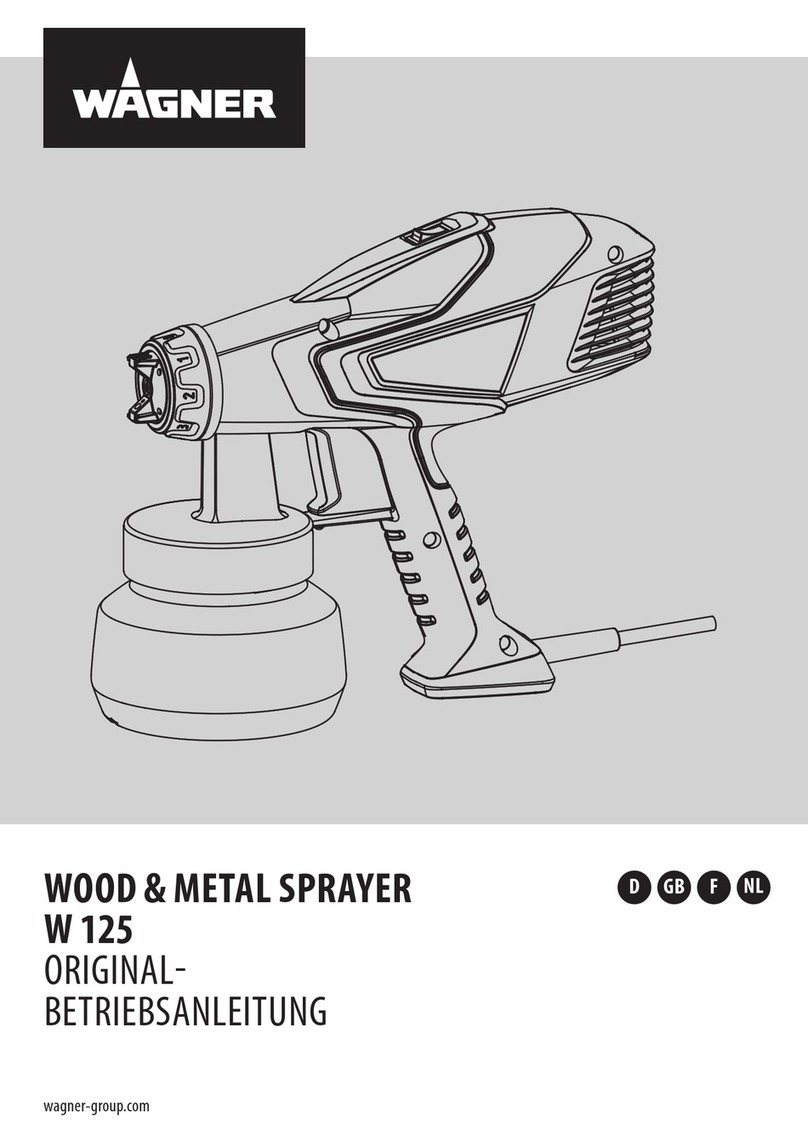
10 308-552
Troubleshooting
Pressure Relief Procedure
To
reduce the risk of serious injury
,
including fluid injec
-
tion,
injury from splashing fluid or
solvent in the eyes or
on
the skin, moving parts or electric shock, always fol
-
low this procedure whenever you shut off the
sprayer
,
when checking or servicing any part of the spray sys-
tem, when installing, cleaning or changing spray tips,
and
whenever you stop spraying.
1.
Engage the gun safety latch.
2. T
urn the ON/OFF switch to OFF
.
3.
Unplug the power supply cord.
4.
Disengage the gun safety latch. Hold a metal
part of the gun firmly to a grounded metal pail.
T
rigger the gun to relieve pressure.
5.
Engage the gun safety latch.
6.
Open the pressure drain valve. Leave the pres
-
sure drain valve open until you are ready to
spray again.
If you suspect that the spray tip or hose is completely
clogged,
or that pressure has not been fully relieved af
-
ter following the steps above
, VERY SLOWLY loosen
the tip guard retaining nut or hose end coupling to re-
lieve
pressure gradually
, then
loosen completely
. Now
clear
the tip or hose obstruction.
Check everything in the guide before disassembling the sprayer
.
TYPE OF PROBLEM WHA
T T
O CHECK
If check is OK, go to next check
WHA
T T
O DO
When check is not OK refer to this column
Building circuit breaker opens
Check all electrical wiring for damaged
insulation.
Replace any damaged wiring.
Check for other electrical appliances on
circuit.
Shutdown other electrical appliances on
circuit.
Check position of 10–12 (Lo–High) amp
switch.
Put switch in 10 amp (LO) position.
Sprayer circuit breaker opens
Check for locked motor rotor
. Unplug cord
and try to turn fan blades with a screwdriver
.
Repair gear train or pump, if damaged.
Thaw
the sprayer
, if frozen; See NOTE 1. Replace
the pressure control, if damaged.
Check for shorted motor
. Use ohmmeter to
check for shorts between motor leads or
between motor leads and motor frame.
Inspect for damage to motor brush leads.
Replace motor
, if necessary.
Check electrical supply with voltmeter
. Meter
should read 210–250 V
AC.
Connect to outlet of correct voltage.
Sprayer will not run
Check pressure control knob setting. Motor
will not run if it is at minimum setting (fully
counterclockwise).
Slowly increase pressure setting to see if
motor starts.
Check for a clogged spray tip. Refer to
separate gun or tip instruction manual.
Relieve pressure. Refer to separate gun or
tip instruction manual for tip cleaning.
Check extension cord for visible damage.
Use a volt meter or test lamp at extension
cord outlet to check.
Replace extension cord.
Check sprayer power supply cord for visible
damage such as broken insulation or wires.
Replace power supply cord.
Check electrical supply with volt meter
. Meter
should read 210–250 V
AC.
Reset building circuit breaker; replace
building fuse. T
ry another outlet.
Check for motor damage. Remove drive
housing assembly
. See page 17. T
ry to rotate
fan by hand.
Replace motor (1) if fan won’t turn.
Poor spray pattern
Check for worn spray tip.
Relieve pressure and then replace the tip.
See the separate gun or tip manual.
